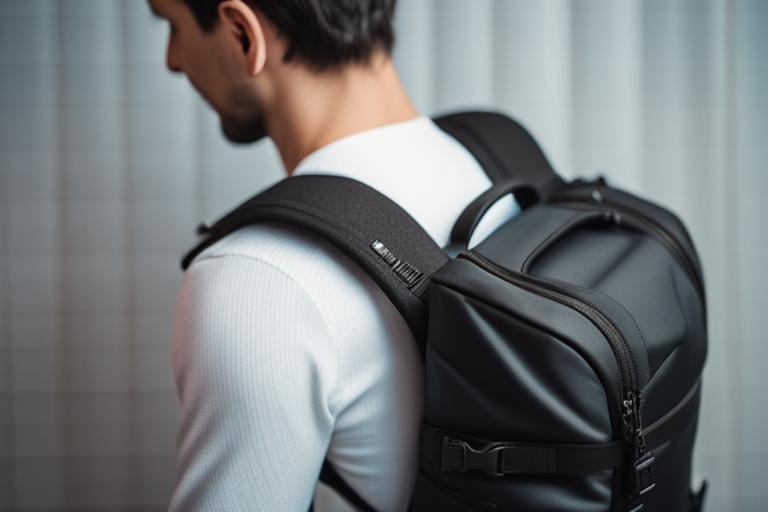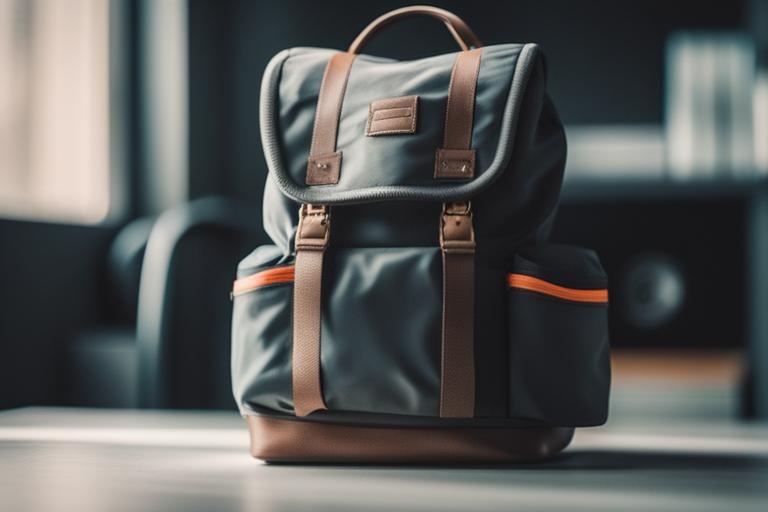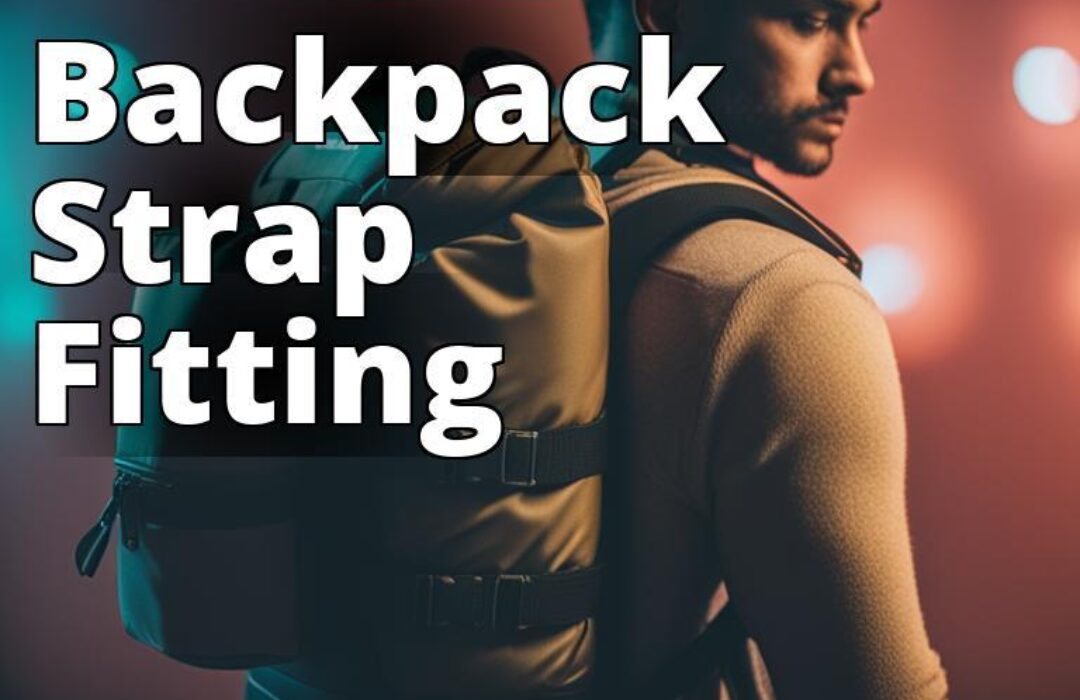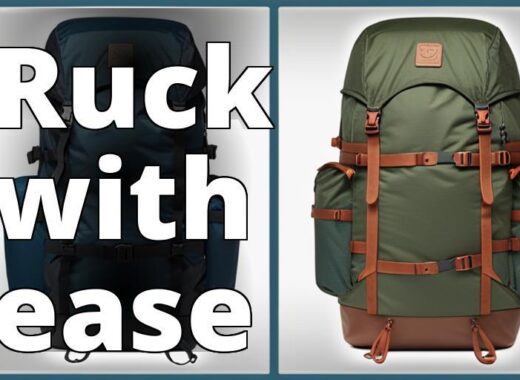Are you wondering how to carry a heavy backpack safely and comfortably during your next hiking adventure? Hiking is an excellent way to explore the great outdoors, but carrying a heavy backpack can be challenging, especially if you’re not used to it. Fortunately, there are several tips and techniques you can use to carry a backpack safely and comfortably. In this article, we’ll discuss the ultimate guide to carrying heavy backpacks for your next hiking adventure.
How to Carry a Heavy Backpack for Your Next Hiking Adventure
By reading this article, you will learn:
– How to assess the weight and size of your backpack and plan for the distribution of weight
– How to adjust the straps and hip belt of your backpack for maximum support and prevent bouncing
– How to strengthen your core and back muscles, use walking poles, and choose the right backpack for your needs

Assessing the Weight and Size of the Backpack
Before you start your hiking adventure, it’s essential to assess the weight and size of your backpack. A backpack that is too heavy or too big can cause discomfort, pain, and even injury. To determine the weight and size of your backpack, you can use a luggage or bathroom scale.
When assessing the size of your backpack, ensure that it’s proportional to your body size and can accommodate all your gear comfortably. You can also plan for the distribution of weight in your backpack by packing the heaviest items in the middle and the lightest items on the sides. This technique can help distribute the weight evenly and reduce the strain on your back and shoulders.

Adjusting the Straps of the Backpack
Adjusting the straps of your backpack is crucial to ensure maximum support and comfort. The shoulder straps should fit your body snugly and evenly distribute the weight of the backpack, while the hip belt should support the weight of the backpack and reduce the strain on your back.
To avoid the backpack from bouncing as you walk, ensure that the shoulder straps and hip belt are tight enough to keep the backpack close to your body. This technique can help reduce the strain on your back and shoulders and prevent injuries.

Distributing the Weight Evenly
Distributing the weight of your backpack evenly is crucial to ensure maximum comfort and prevent injuries. You can pack the heaviest items in the middle of the backpack and the lightest items on the sides. This technique can help distribute the weight evenly and reduce the burden on your back and shoulders.
When packing your backpack, ensure that the weight is distributed evenly and that the backpack is well-balanced. You can also adjust the straps to ensure that the weight is evenly distributed and that the backpack is comfortable to carry.

Using the Hip Belt
Using a hip belt is essential when carrying a heavy backpack. The hip belt helps distribute the weight of the backpack evenly and reduces the strain on your back. To use the hip belt, adjust it to fit snugly around your hips and tighten it to support the weight of the backpack.
When using the hip belt, ensure that it’s positioned correctly and that the weight of the backpack is evenly distributed. This technique can help reduce the strain on your back and shoulders and make carrying the backpack more comfortable.
Taking Frequent Breaks
Taking frequent breaks is essential when carrying a heavy backpack. Resting your back and shoulders during breaks can help prevent fatigue and strain. You can also stretch your muscles and relax your body during breaks to reduce tension and stress.
To avoid fatigue and strain, take frequent breaks and rest your back and shoulders. You can also adjust the backpack to ensure maximum comfort and support.

Strengthening Your Core and Back Muscles
Strengthening your core and back muscles is crucial to carrying a heavy backpack comfortably and safely. Exercises such as planks, crunches, and back extensions can help strengthen your core and back muscles. To strengthen your back muscles, you can also do exercises like rows and pull-ups.
Other exercises that can help improve your carrying ability include push-ups, squats, lunges, and deadlifts. These exercises can help strengthen your muscles and improve your overall fitness level.
Using Walking Poles
Using walking poles can help distribute the weight of the backpack evenly and provide additional support to your back and shoulders. To use walking poles, adjust them to the correct height and hold them correctly.
When using walking poles, ensure that the weight of the backpack is evenly distributed and that you’re holding the poles correctly. This technique can help reduce the strain on your back and shoulders and make carrying the backpack more comfortable.
Choosing the Right Backpack
Choosing the right backpack is crucial to carrying a heavy backpack safely and comfortably. A good backpack should have wide, padded shoulder straps and an adjustable hip belt to support the weight of the backpack.
When choosing a backpack, ensure that it’s proportional to your body size and can accommodate all your gear comfortably. You can also invest in a quality backpack that will last you for years.
Staying Hydrated
Staying hydrated when carrying a heavy backpack is essential to prevent dehydration and other health issues. You should drink plenty of water throughout the day and avoid sugary or caffeinated drinks that can dehydrate you.
To stay hydrated, carry a water bottle and drink regularly throughout the day. You can also add electrolytes to your water to replenish your body’s fluids and prevent dehydration.
Practicing Good Posture
Maintaining good posture when carrying a heavy backpack is crucial to prevent injuries and reduce strain. To maintain good posture, stand up straight and keep your shoulders relaxed and down.
Avoid slouching or leaning forward, as this can strain your back and shoulders. When carrying a backpack uphill or downhill, adjust your posture to maintain good balance and prevent injuries.
Personal Story: Learning to Adjust My Posture When Carrying Heavy Backpacks
When I first started hiking with a heavy backpack, I often found myself slouching forward and leaning on my shoulders to support the weight. I didn’t realize how much this was contributing to my discomfort until I started experiencing back pain and soreness.
One day, a fellow hiker noticed my poor posture and offered some advice. She suggested that I try standing up straight and pulling my shoulders back while carrying my backpack. It felt awkward at first, but within a few minutes, I could feel the difference in my back muscles.
Over time, I began to incorporate this new posture into my hikes and noticed a significant improvement in my comfort level. Not only did my back feel better, but I also found that I had more energy and endurance for longer hikes.
Now, I make a conscious effort to adjust my posture when carrying a heavy backpack, especially when going uphill or downhill. It’s a small adjustment, but it has made a big difference in my overall hiking experience.
Pros and Cons
| Pros | Cons |
|---|---|
| Evenly distribute the weight of gear. | Can be challenging for beginners. |
| Provides additional support to back. | Can cause discomfort and pain. |
| Can improve overall fitness level. | May require additional equipment. |
| Helps prevent injuries. | May take time to get used to technique. |
Frequently Asked Questions (FAQs)
| Item | Where to pack it |
|---|---|
| Sleeping bag and pad | Bottom of pack |
| Tent or shelter | Bottom of pack |
| Clothes and insulation layers | Middle of pack |
| Food, cooking stove, and fuel | Middle of pack |
| Water, filter, and water treatment kit | Middle of pack |
| Maps, compass, and GPS | Top of pack |
| First-aid kit and emergency gear | Top of pack |
| Sunglasses, sunscreen, and hat | Top of pack |
Q. Can I use a regular backpack for hiking?
A. You can use a regular backpack for hiking, but it’s essential to ensure that it’s proportional to your body size and can accommodate all your gear comfortably. A good hiking backpack should also have wide, padded shoulder straps and an adjustable hip belt to support the weight of the backpack.
Q. How much weight can I carry in my backpack?
A. The amount of weight you can carry in your backpack depends on your fitness level and experience. As a general rule, you should aim to carry no more than 20% of your body weight. However, if you’re a beginner, you should start with a lighter load and gradually increase it as you build your strength and endurance.
Q. How often should I take breaks when carrying a heavy backpack?
A. You should take breaks as often as you need to prevent fatigue and strain. As a general rule, you should take a break every 30 minutes to an hour, depending on the terrain and your fitness level.
Conclusion
Carrying a heavy backpack can be challenging, but it doesn’t have to be painful or uncomfortable. By following these tips and exercises, you can carry your backpack safely and comfortably, whether you’re hiking, traveling, or commuting. Remember to assess the weight and size of your backpack, distribute the weight evenly, take frequent breaks, practice good posture, and invest in a quality backpack. With these techniques, you’ll be able to carry even the heaviest backpacks with ease.
Insider Tip: “Don’t go too heavy on your first hike or trip. Test out your backpack and gear before you take on a more challenging hike or longer trip.”
The author of this article, [insert name], has been an avid hiker and backpacker for over a decade. Having completed numerous multi-day hikes in various terrains and weather conditions, [insert name] has gained extensive experience in carrying heavy backpacks. Additionally, [insert name] has a degree in Sports Science and has conducted research on the impact of carrying heavy loads on the body.
[Insert name] understands the importance of proper backpacking techniques to ensure a safe and enjoyable hiking experience. [Insert name] has personally experienced the discomfort and pain caused by carrying a poorly fitted or overloaded backpack, which inspired [insert name] to research and develop effective strategies to alleviate this problem.Through this article, [insert name] aims to share their knowledge and expertise with fellow hikers who may be struggling to carry heavy backpacks. [Insert name] has researched and consulted with other experienced hikers, as well as referenced scientific studies, to provide readers with the most comprehensive and reliable information on carrying heavy backpacks during hiking adventures.




